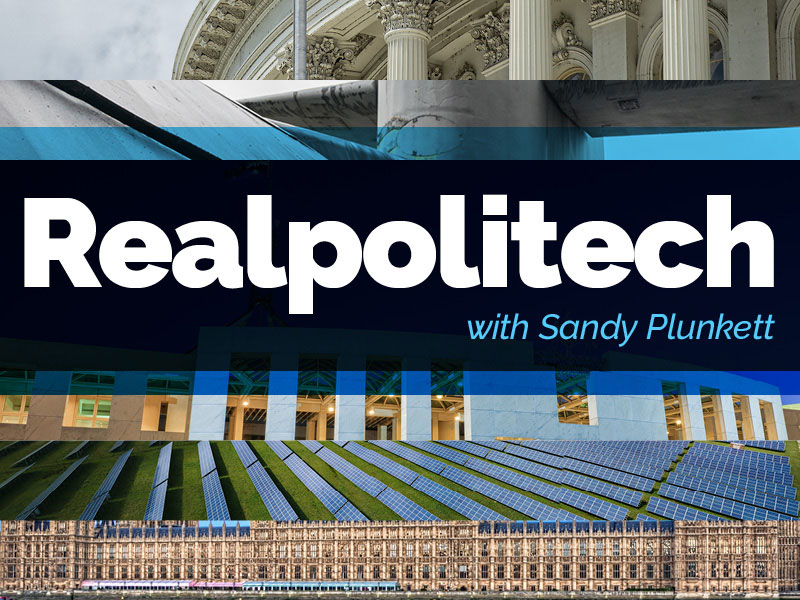For all the pre-budget Future Made in Australia hype; all the predictions that federal Labor would deliver a bold state-led ‘mission economy’ reindustrialisation agenda of the type evangelised by progressive UK-based academic Mariana Mazzucato, the big budget reveal was much more about politically driven spending and investment to win an election.
Indeed, from the $22.7 billion budgeted over 10 years for the flagship Future Made in Australia (FMiA) agenda, to the many billions of dollars more to address cost-of-living relief, Realpolitech interprets the budget as a classic manifestation of Daniel Kahneman’s Prospect Theory rather than Mazzucato’s Mission Economy.
Kahneman won the Nobel Prize in economics in 2002 for Prospect Theory, now a cornerstone of behavioural economics.
It describes how people – and perhaps especially politicians – make decisions under uncertainty, like in this era of “churn and change” as Treasurer Jim Chalmers repeatedly describes it.

Devised by Kahneman and mathematical psychologist, Amos Tversky in 1979, Prospect Theory stems from the concept of loss aversion, a cognitive bias that suggests because the psychological pain of losing is twice as powerful as the pleasure of gaining, people tend to try to avoid loss rather than trying to acquire equivalent gains.
It challenged traditional economic theory that assumed decision-makers are rational utility maximisers.
“Gains and losses are short-term. They are immediate emotional reactions,” said Kahneman, who died in March. “This makes an enormous difference to the quality of decisions.”
The ‘quality’ of big spending decisions that characterise this budget as voters and businesses struggle against high inflation and the nation heads into years of deficits, higher unemployment; and ever declining productivity, are pitched under the banners of cost-of-living relief and change. But they are almost entirely motivated to avoid the ‘churn’ of an election loss.
It is a budget that prioritises sectional interests over national economic competitiveness, growth strategy and the skills development we need to avoid further economic decline and strategic irrelevance regionally and globally.
And, for participants in the long neglected broad-based domestic tech and innovation sector, the message of the budget was clarifying, if not edifying: Outside of energy & resources tech, this government, like so many others, still doesn’t understand you, your business models or what assistance can help you scale.
After seeing the government make a couple of head scratching bets on a single quantum computing company with a technology that may never manifest, and domestic solar panel manufacturing that has little hope of competing against China, there was little support for the software sector and in particular for boosting Australian activity and investment in Artificial Intelligence (AI) startups, research or business adoption of AI.
AI is not just any new software. It is a many headed hydra of a transformational platform technology for the world that is just getting started.
The Labor government – most likely to appease unions – persistently ignores the critical importance of planning and preparing the nation for AI’s current and future impacts in every facet of business and industry and jobs.
This neglect will bite back big as we delay building skills for an AI-driven world and slip further behind not just the US, but Canada, South Korea, and most all OECD countries who are beefing up public and private investment in the technology.
The Budget made it much clearer that the government sees the Future Made in Australia through the lens of a net-zero led resources boom.
The government is betting the new resources push will be green-er and will hopefully deliver some value-added refining and processing with the assistance of $13.7 billion in tax credits for production of green hydrogen and processed critical minerals.
Choosing tax credits over direct subsidies is a wise play here. But again, for political not strategic growth reasons, the critical minerals pool does not include Uranium or Thorium, even though we have the world’s largest and second-largest reserves of them.
That seems a hell of a waste of an opportunity.
The government has also defined five criteria to vet future FMiA government assistance for renewable energy transition and advanced manufacturing projects under the new National Interest Framework.
They are Green Hydrogen; low carbon liquid fuels; green metals; critical minerals processing; and clean energy manufacturing including battery and solar panels.
The government says the National Interest Framework imposes rigour on its public investment decision-making to prioritise those that will attract – crowd-in – significant private investment.
That remains to be seen. But for many in the tech and innovation system, ‘rigour’ lost its traditional meaning after the first captain’s picks into PsiQuantum and Solar Sunshot, to be located in marginal electorates in Queensland and the Hunter Valley respectively.
It is asking a lot to have confidence in government rigour and transparency in assessing viable projects when so many questions already remain unanswered under “commercial in confidence” dismissals.
The renewable energy superpower focus of FMiA also expands the funding and activities of the Australian Renewable Energy Agency (ARENA) by $7.1 billion, including $1.9 billion boost to ARENA’s baseline funding; $2 billion for round two of the Hydrogen Headstart program; and $1.7 billion for the Future Made in Australia Innovation Fund.
This is in addition to the $1 billion previously announced for the Solar Sunshot program; and $500 million for the Battery Breakthrough Initiative. The latter is intended to incentivise development in the much sought after ‘high value’ parts of the battery supply chain, which Australia is yet to be a rated player in.
The FMiA Innovation Fund to support the development and demonstration of early-stage technologies prioritised under the National Interest Framework and is different to the $1.7 billion FMiA Innovation, Science and Digital Capabilities funding package, that the Budget revealed the PsiQuantum investment was part of.
“The world is committed to net-zero by 2050. This will demand the biggest transformation in the global economy since the Industrial Revolution,” Treasurer Chalmers said.
“Australian energy can power it. Australian resources can build it. Australian regions can drive it. Australian researchers can shape it. And Australian workers can thrive in it.”
It’s a strong and rallying quote on its face, but the weeks and months ahead in this year leading up to an election being called by May 17 will reveal much devil in so many details that have not been articulated by the Government.
Even more opaque is the future shape of defence industry and AUKUS technology investment and commercialisation programs and what they mean for the development of new sovereign capability.
Total defence spending in the next ten years – some $765 billion – dwarfs the net-zero-driven FMiA budget allocations. If PsiQuantum investment detail can be so easily dismissed with a wave of ‘commercial-in-confidence’, consider how little taxpayers will learn of how their money is being spent under ‘national security’.
The other critical conversation we are not having is about where and how are we going to get the skills and capability to meet the challenges of the times.
The Treasurer boasts of our Net-Zero Green Energy Superpower ambition that Australian researchers can shape it and Australian workers can thrive in it.
But the Australian research and commercialisation system is woefully underperforming. Our R&D spending (1.68 per cent of GDP) is the lowest in decades and far below OECD averages.
And the long-awaited government response to its own goals of lifting R&D spending to 3 per cent by 2030? It is impossible, given the announcement that yet another system review will be on the agenda, but not before the end of this year at least.
Meanwhile past and recent R&D system analysis collect dust somewhere in Industry & Science Minister Ed Husic’s office, including this one from the Minister’s own independent advisory agency, Industry Innovation and Science Australia (IISA).
It was published in September 2023 and rightly frames Australian R&D collaboration and commercialisation barriers in the context of Australia’s industry and economic structure, which has little demand or absorptive capacity for high impact, new-to-the-world R&D.
As for Australian workers fit for purpose to meet the challenges of the new green energy and defence industry reindustrialisation era, where do we plan on finding enough of them?
Federal Labor has announced that from July 2024 it will expand the New Energy Apprenticeships Program to help build the skilled workforce to transition to clean energy – supporting 10,000 new energy apprenticeships. It’s not nothing. But there is a long way to go and a lot more skills to find and develop and fast.
As one senior leader in the domestic tech and innovation sector quipped: “The green energy transition has been hijacked by politicians and political science grads when it is crying out for engineers.”
If a clear-eyed assessment of Australia’s skills and capabilities gaps does not happen soon, any hope of Australia progressing to either a green energy superpower or a secure nation will evaporate.
Do you know more? Contact James Riley via Email.

